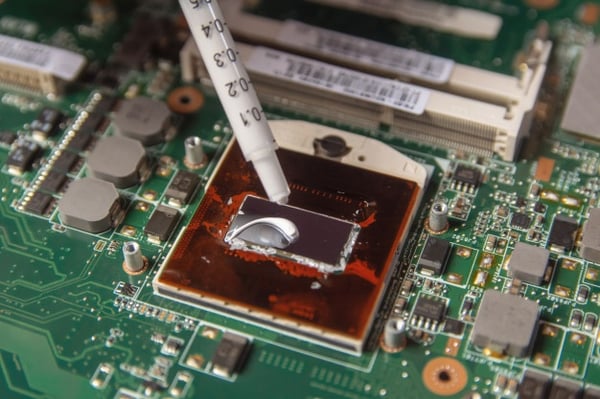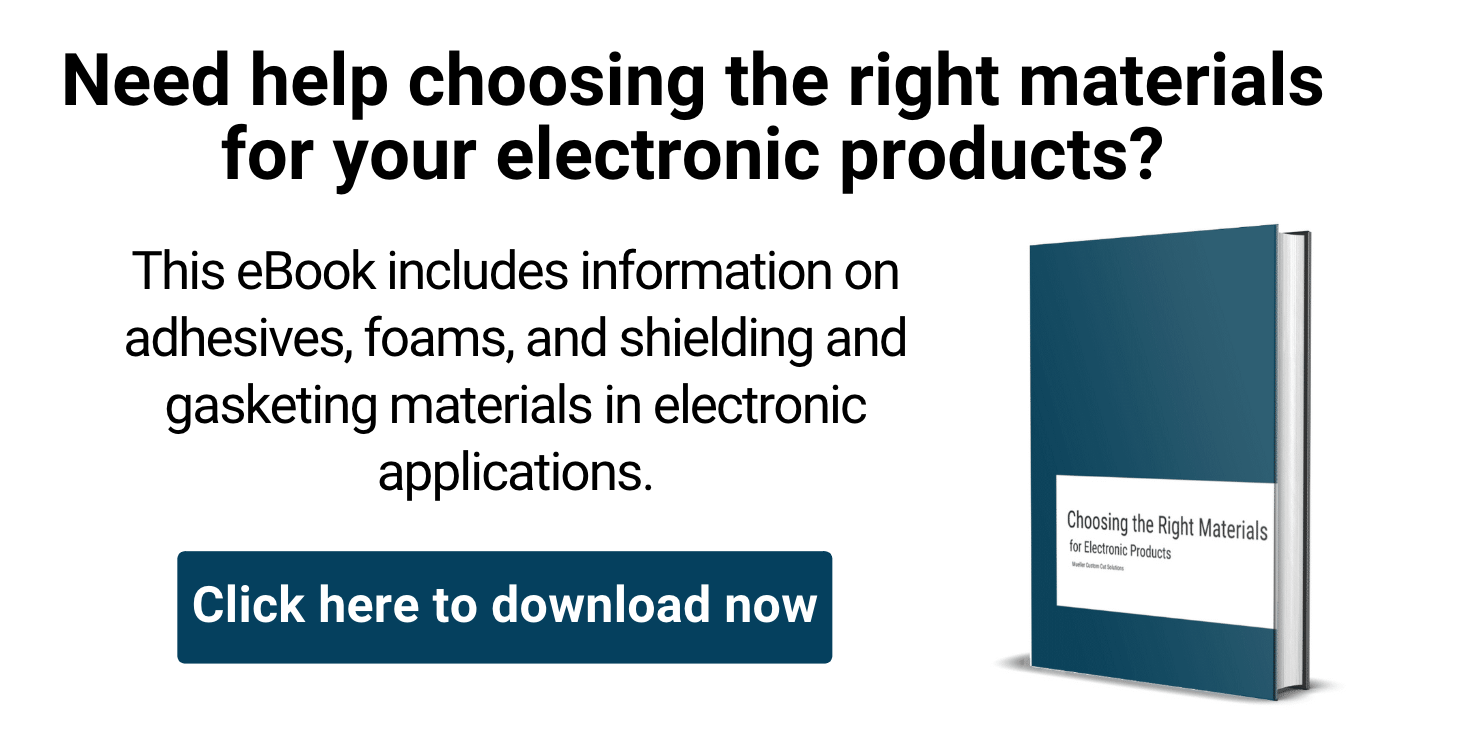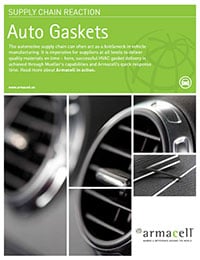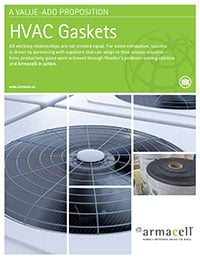
As long as machines, tools, and devices have running parts, they will have heat, and as we all know, too much heat can be problematic. With heat dissipation materials, those issues can be avoided in electronic products. However, it isn’t always clear what material to use to dissipate heat in your products best.
This guide is going to look at the three most prominent heat dissipation materials in the electronics industry and discuss their properties, pros, and cons. The electronics experts at Mueller are here to educate you on the world of heat-dissipating materials, and ultimately, give you the information you need to know to make informed decisions for your future products. Let’s get started.
What are Thermal Dissipation Materials?
The three most common materials used for dissipating heat in electronic products are thermal greases, thermal gap pads, and thermal tapes. First, let’s explore what the defining qualities of each material are.
Thermal Grease
Thermal grease is the most widely-used and cost-effective of the thermal dissipation materials we’re examining. Grease is an extremely conductive material that is easy to apply to almost any product, usually coming from a tube. When applied to the entire surface of a product, it can be the most effective dissipating material around.
However, grease is messy. If maintenance needs to be done to the product later in its lifecycle, the messiness of grease can make it difficult. In addition, it can also be an inconsistent dissipator depending on the operator. If not applied to cover a component’s surface completely, it will not be effective in dissipating heat. Thermal grease also has a particular working temperature, meaning if used at too high a temperature, it can liquify and migrate. This will result in it being even less effective at dissipating heat.
Thermal grease is most commonly used in low-cost electronics, as well as any products with a controller, such as lawnmowers, leaf-blowers, or chainsaws. These products don’t see constant use and need a dissipating material that won’t degrade, making grease the best choice.

Thermal Pads
Thermal pads are an incredibly consistent material for heat dissipation. Generally, these gap pads arrive in sheets and can be die-cut to fit electronic product components perfectly. They have a putty-like texture, are filled with conductive materials (such as ceramic), and can be thick or thin depending on the application. As the conductivity of the pad increases, the thicker the pad gets.
Thermal gap pads are also an expensive material to use for heat dissipation. Since they are a filled material, they increase in price as you try to cover more space with them. Likewise, the price increases as the conductivity level does. As our material expert, Matt Hanline, says, “The more conductive, the more expensive they are.”
Thermal pads are most commonly used in smartphones, computers, laptops, and products with high heat environments. Thermal gap pads provide devices with the dissipation they need without the risk of degrading or moving within the product. Pads also provide products in high heat environments the dissipation they require without risk of liquifying and becoming ineffective.
Thermal Tape
Thermal tape is more of a niche material for heat dissipation, meaning it’s only truly useful in certain situations. There are two types of tapes that can be used for dissipating heat: pressure-sensitive adhesives (PSAs) and certain types of pads that have high tack. Thermal tapes are most advantageous during the design phase of a product, as they can save time during assembly by eliminating the need to use screws for specific products.
However, thermal tapes are generally only suitable for electronic products with low conductivity, since the tapes themselves are not very conductive. This means they can usually be used on products that do not emit high levels of heat.
Thermal tapes are most commonly used with LED lighting strips, as well as other mounted appliances, since they have the highest tack and ability to hold components together.

Comparing Thermal Grease, Tape and Pads
Now that you’re familiar with the three most prominent heat dissipation materials, it’s time to examine how they compare to each other. As you might have gathered from their descriptions, the materials each have their own set of pros and cons. That being said, some qualities set the three apart from one another in terms of quality, practicality, and price.
The two materials that have the most to compare are thermal grease and gap pads. At face value, grease is more conductive than gap pads. However, this is only the case when thermal grease is applied to 100% of the product’s surface, which is often not the case. Many times, grease is not applied thoroughly, allowing it to dissipate some heat, but not enough to reach its full potential. Essentially, grease is more conductive than pads, but pads are much more consistent in their dissipating ability.
The other key factor in deciding which is the better of the two is cost-effectiveness. The truth is that thermal grease is much cheaper and more cost-effective than thermal gap pads. If you are looking to save money, then grease is probably the heat dissipation material for you. However, it is worth remembering the general difference in quality between grease and pads outlined above.
As for thermal tape, the only real point of comparison it has is with thermal pads, which also have tack. However, thermal tape is made for attaching components and keeping them together, while pads keep things in place but cannot be counted on to hold parts up or suspend them. Basically, tape is well-suited for instances where you need some heat dissipated while also keeping parts attached or suspended, while pads are meant to be a buffer, not an adhesive.

Which is Best for Your Product?
Like many decisions made during the manufacturing process, the correct heat dissipation material is very application dependent. Thermal greases, tapes, and gap pads are all effective dissipating materials in their own right, but also occupy their own niches.
If you are looking for an easy to use and cost-effective heat-dissipating solution that requires attention to detail, then thermal grease will work for your product (as long as you don’t mind a mess).
If you want the most surefire solution for heat dissipation, use thermal gap pads.
Lastly, if you are looking for an adhesive that works well with light strips or suspended components, then thermal tape will meet your needs.
Using this guide, you now have the knowledge to decide which thermal dissipation material is best-suited for your electronic products and can make the most informed decision when designing and planning for the future.





